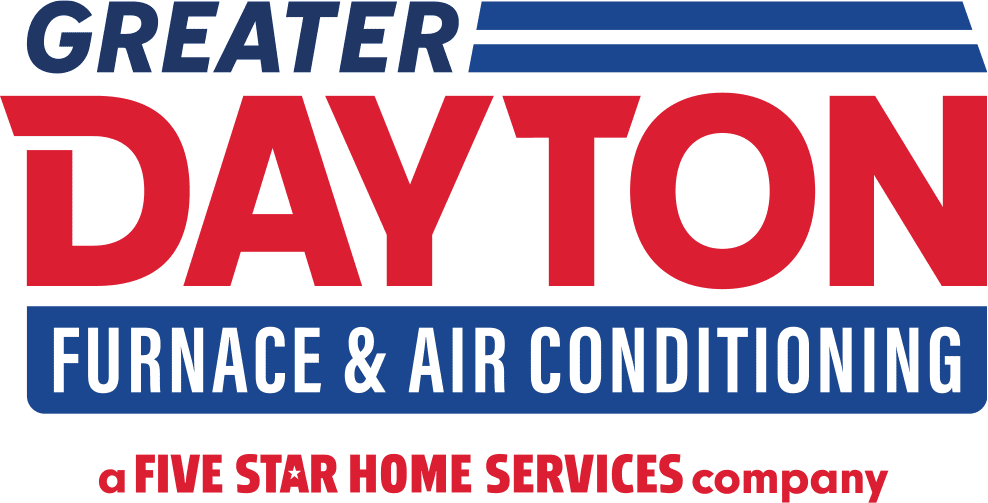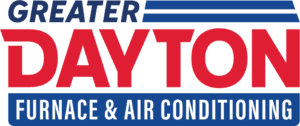Discovering that your air conditioning unit emits only hot air when you’re trying to lower the temperature, is a scenario best avoided. The period from June to August in Ohio is known for its peak heat and humidity, marking it as the hottest and wettest season. If you are currently facing a malfunctioning air conditioner, it can understandably feel as if you are melting.
Setting jokes aside, we acknowledge the urgency of restoring your air conditioner to full operational status, as it remains a top priority. A functional air conditioner is not merely a matter of comfort; it is crucial for maintaining your health and safety by ensuring proper airflow and circulation throughout your home. Compromised airflow can adversely affect your indoor air quality.
With Greater Dayton Furnace & Air Conditioning‘s practical troubleshooting steps, you can identify why your AC may not be blowing cool air. As your trusted local experts, we will explore the most common causes behind your AC’s performance issues and guide you through the most effective troubleshooting methods.
Look at the Thermostat
Firstly, concentrate on the thermostat, which serves as the core of your HVAC system. A malfunctioning thermostat can disrupt the entire operation by miscommunicating with your HVAC system, thereby affecting your AC’s functionality. Numerous HVAC issues originate from thermostat problems. Therefore, if you are experiencing AC difficulties, the solution might be related to the thermostat.
- Ensure your thermostat is switched on and functioning properly. If your model requires batteries, they may need to be replaced.
- Next, confirm that your thermostat is not inadvertently set to “heat.”
- Finally, it is crucial to set the thermostat to “auto” rather than “on.” Setting it to “on” causes the fan to run continuously, regardless of the temperature.
Look at the Circuit Breaker
Is your AC unit functioning properly? It is possible that a tripped breaker switch is causing a disruption. If your unit is emitting warm air, it may not be an immediate concern. However, it is always advisable to perform a quick check to ensure everything is operating as it should.
Circuit breakers are typically located in low-traffic areas of the home, such as the basement, garage, or utility closet. Consider inspecting your breaker to determine if the air conditioner has tripped it. If this is the case, simply switching it back to the “on” position may resolve the issue. If this rectifies your problem – excellent. However, it is important to note that if your unit frequently trips the breaker, it may indicate a more serious underlying issue that requires the attention of a certified professional.
Look at the Air Filters
Although a clogged air filter may not initially seem like a significant issue, neglecting dirty air filters can result in considerable complications. An air filter laden with dust and airborne pollutants restricts airflow, causing a cascade of problems that affect critical components such as the motor, fan, or compressor. Consequently, regular maintenance and timely replacement of air filters are crucial for ensuring the longevity and efficiency of these systems.
It is imperative to regularly replace your air filters every 1-3 months, depending on the specific type of air filter, the presence of pets in your home, and the frequency of system use. Given your current issue with a malfunctioning AC, we recommend inspecting your air filters to ensure they do not require replacement. A timely filter change may resolve the issue with warm air. Should this step not rectify the problem, please proceed to the next step.
Look at the Evaporator Coils
In relation to the aforementioned step, it is imperative to acknowledge the importance of maintaining a clean air filter. A clogged filter can lead to the buildup of dust and debris on the evaporator coil, which in turn diminishes the coil’s efficiency in absorbing heat from the air. This reduction in efficiency hampers the critical heat exchange process essential for cooling. Therefore, ensuring these components are kept clean is vital for optimal air conditioning performance.
To ensure optimal performance and longevity of your system, it is essential to regularly inspect the evaporator coils. Should you observe any accumulation of dust or debris, a gentle cleaning is recommended. For detailed instructions on how to properly clean your evaporator coils, please visit this link.
Look for Signs of Low Refrigerant or a Refrigerant Leak
Just as your vehicle relies on coolant for its air conditioner to deliver cool air, your home’s air conditioning system operates on a similar principle. The key to your AC’s ability to efficiently exchange heat for cold lies in its refrigerant. If the levels of this refrigerant drop—perhaps due to a leak or simply low supply—the consequence is that your system will circulate warm air instead. These situations highlight the importance of regular maintenance to ensure optimal performance and avoid the discomfort of inadequate cooling.
If you are not an HVAC technician, it is unlikely that you can legally obtain the refrigerant your air conditioning system requires. It is prudent to leave such troubleshooting to the professionals. Nonetheless, it is advisable to remain vigilant for any clear signs that your refrigerant may be low or leaking. Be attentive to the following indicators:
- You may hear bubbling or hissing sounds when the AC is not in use.
- A noticeable lack of cool air from your vents could be concerning.
- Ice formation on your evaporator coils indicates a potential issue.
Look at the Condenser
Finally, let’s address your outdoor unit, known as the condenser. It is important to note that when the coils of a condenser accumulate dirt, their capacity to expel warm air from your home diminishes significantly. This inefficiency can result in a noticeable reduction in cool air circulation. If left unattended, this issue may not only persist but also cause substantial damage to the condenser unit over time.
- If you discover that your condenser coils are coated in grime, the first step is to ensure the power supply to the unit is safely turned off. Prioritize safety above all else. Then, don protective gloves and carefully wash away the debris using a water hose, selecting a gentler setting such as “shower” or “flat” to avoid damage. Avoid the “spray” setting to prevent harm to the coils.
- Securely grasp the hose and begin rinsing from the bottom of the condenser, moving methodically an inch at a time across the coils from left to right. Proceed with caution and precision, as rushing through this process could potentially damage the unit.
For a more comprehensive cleaning, consider that your HVAC technician is equipped to address the finer details of the condenser during your upcoming routine maintenance and safety inspection. This will ensure your unit runs efficiently and extends its lifespan, thereby safeguarding your investment in your home’s comfort.
Get your air conditioning system ready for Ohio’s heat with your Greater Dayton Furnace & Air Conditioning family. Please, don’t hesitate to reach out if you need further assistance with this issue!
Call us at (937) 412-2939 or schedule an appointment online now by Clicking here!





